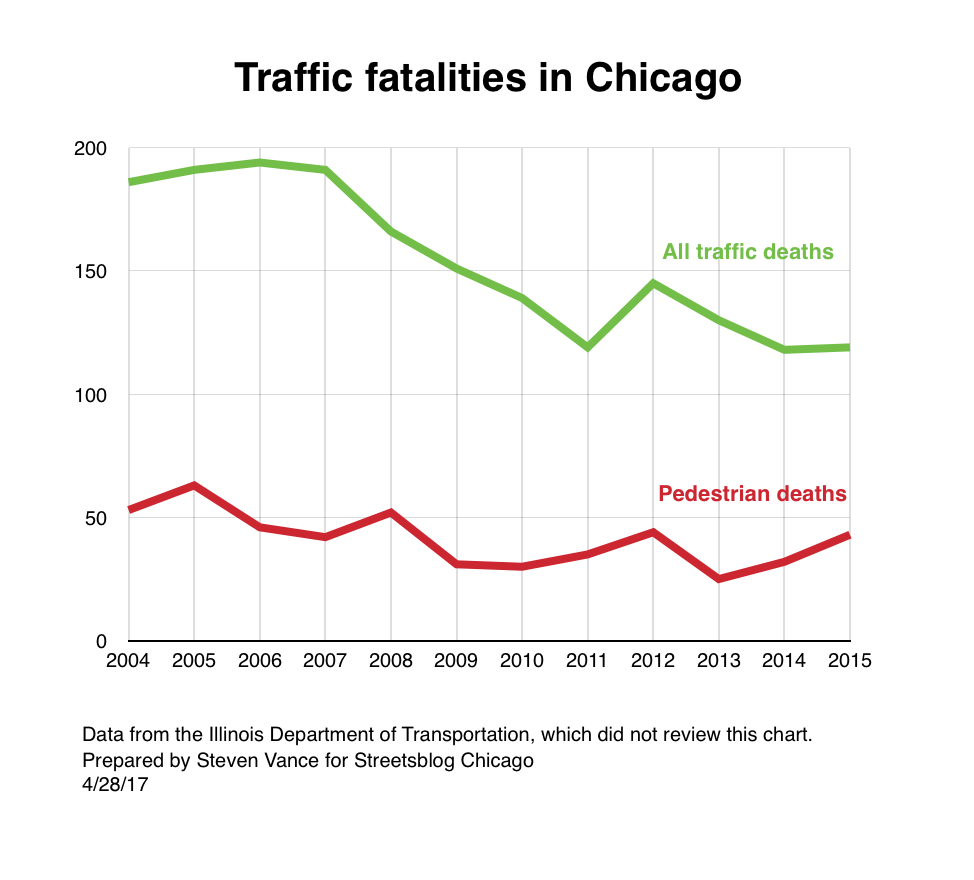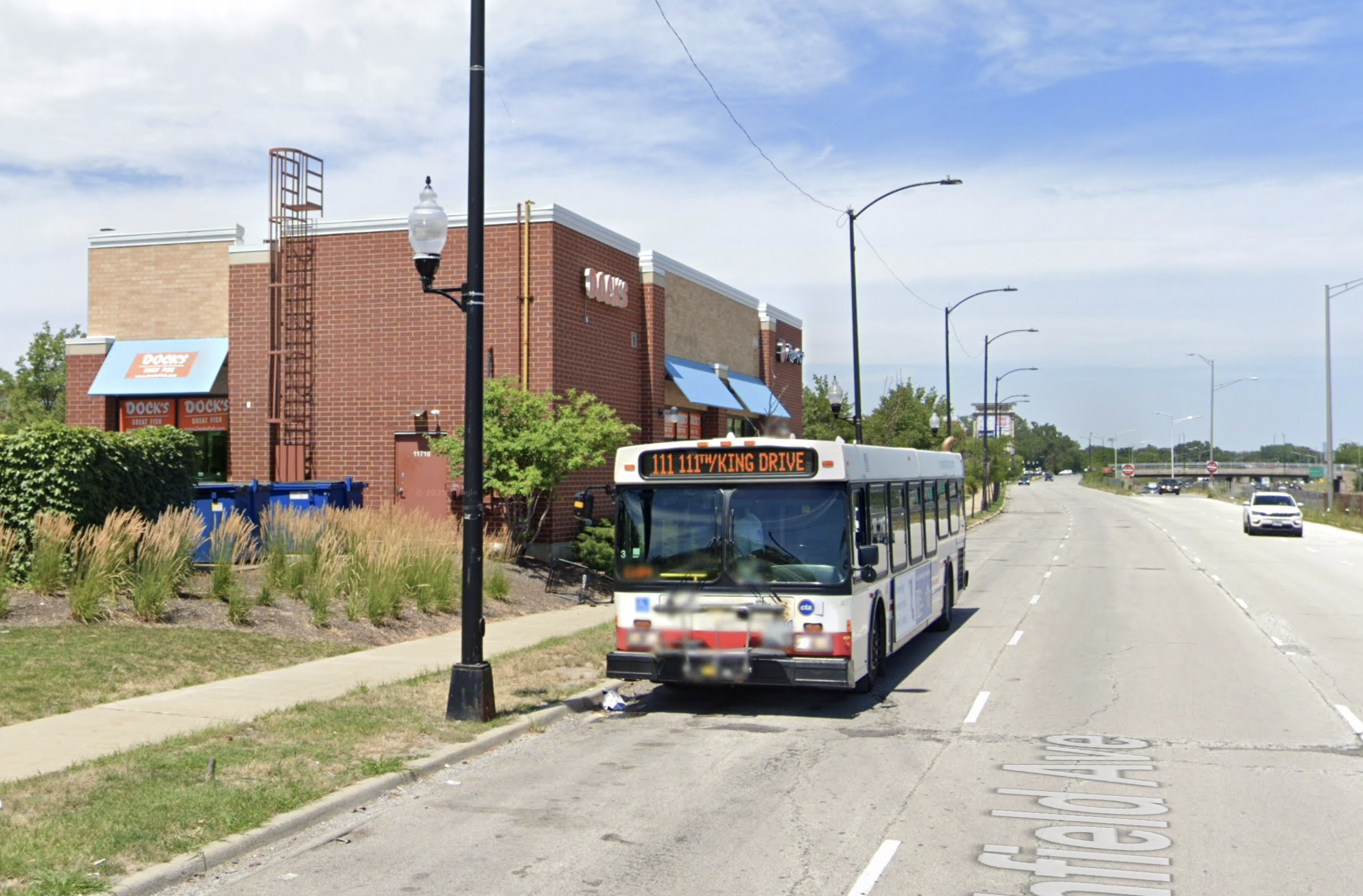When the Illinois Department of Transit finally released its 2015 Chicago crash data last month, there was some good news. The total number of pedestrian, cyclist, and car occupant fatalities was about as low as it has ever been in recent memory, with 119 deaths. While that was one more than in 2014, and still way too many compared to peer cities in other countries, it represents the continuation of a general downward trend since 2004 (the earliest date for which we have IDOT data) as you can see from the above chart.
However, there was also some bad news. During the same 12-year period the number of Chicago pedestrian fatalities fluctuated somewhat but, with 43 in 2015, we’re still in the same ballpark that we were in 2004, when 53 people walking were killed.

Worse, while the total number of crash fatalities has fallen, the percentage of victims who were on foot has risen over the last several years, as the chart above shows. While 21.58 percent of the crash victims in 2010 were pedestrians, by 2015 that number had grown to 36.13 percent, the highest percentage ever since 2004. The average percentage of pedestrian deaths during that period was 26.9 percent.
The percentage of crash victims on bikes also rose in recent years, from 3.60 percent in 2010 to 6.72 percent, which is also the highest share since 2004. But that’s not quite as troubling as the pedestrian number, since the number of people biking to work in Chicago has risen dramatically in recent years, having more than doubled since 2000. The average share between 2004 and 2015 was 3.9 percent.
The takeaway from these numbers is that while conditions on Chicago streets are generally safer than they were in 2004, most of the drop in fatalities has benefited motorists and their passengers, while pedestrians aren’t seeing the same improvements. It’s still more evidence of the need to protect vulnerable road users via infrastructure, enforcement, and education that discourages dangerous driving and improves safety for people on foot and riding bikes.






